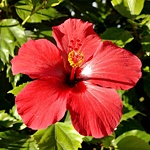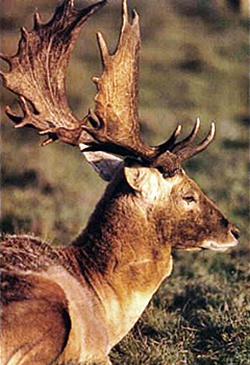Objects Animals Plants Relics

Antigua Coat Of Arms
Antigua Coat-of-Arms was originally designed by Mr. Gordon Christopher, about 1966. It was later modified by the Financial Secretary, Mr. Don Cribbs. The motto Each Endeavoring All Achieving was composed by Mr. James H. Carrot M.B.E., who at the time was the Permanent Secretary in the Ministry of Trade, Production and Labor. He won a prize of $100.00 dollars

The Pineapple surmounting the arms represents the famous Antigua black pineapple.The Red Hibiscus flowers are symbolic of the many varieties that bloom in the nation.The Golden Sun and the wavy blue and white bands symbolizes the sea, sun and beaches.
The central Sugar Mill and the stem of Sugar Cane echoes the historic production of sugar, once the main industry. The century plant or Dagger pole with its stem and showy golden yellow flowers was a part of the historic emblem of Antigua and the leeward islands. The two rampant Deer depict the only large animal within the eastern Caribbean and that is unique to Antigua and Barbuda.

Antigua Pineapple
The Pineapple was first introduced into Antigua and Barbuda by the Arawak Indians from South America about the time of the first Christmas and was called Boniama or Yayama by them and was believed to be food for the Gods.
The thorny leaves were used for producing initiation pains on young men, and for making twine and cloth. A tasty wine was made from the fruits and pineapples were also used for urinary complaints and for producing abortions.
The Antigua variety of pineapple is known as the "Black". It has a dark green color when it is most delicious, but is smaller than other commercial types. This variety ripens to a golden glow. It is juicy, sweet, and full of flavor.

Barbuda Fallow Deer
Deer have thrived on Barbuda and Guiana Island (off the north coast of Antigua) for centuries. Deer are not indigenous to Antigua and Barbuda, but then no other mammal appears to be except perhaps a bat or two.
It is thought European Fallow Deer were first introduced from Norway into England at the time of James I. It is not known exactly when the lessees of Barbuda, the Codringtons, introduced deer into Barbuda, but there were as many as a thousand head in 1740 and by 1827, they were a ?nuisance? for they stripped the vegetation.
In 1784, three thousand were reported, whereas a century later, there were only about 300. Deer were introduced onto Guiana Island sometime after 1811, when Bethell Codrington bought it for raising stock.

Antigua Sugar Mills
The Sugar mill is an important part of Antigua's history. Before the 21st century all sugar mills were owned by individual planters scattered over the island. Then when sugar cane output began to fail a central factory was built at Gunthorpes Estate in 1904.
End Of Sugar Production In Antigua
Here Antiguans' were better able to communicate with each other, and seeing their exploitation, shop stewards were first formalized. By 1939, a trade union had been established. Soon an alliance between Government and a trade union led to the Ministerial system, thus a path to Independence was attained. Sugar ceased to be ground in 1972.
 Skip Nav
Skip Nav